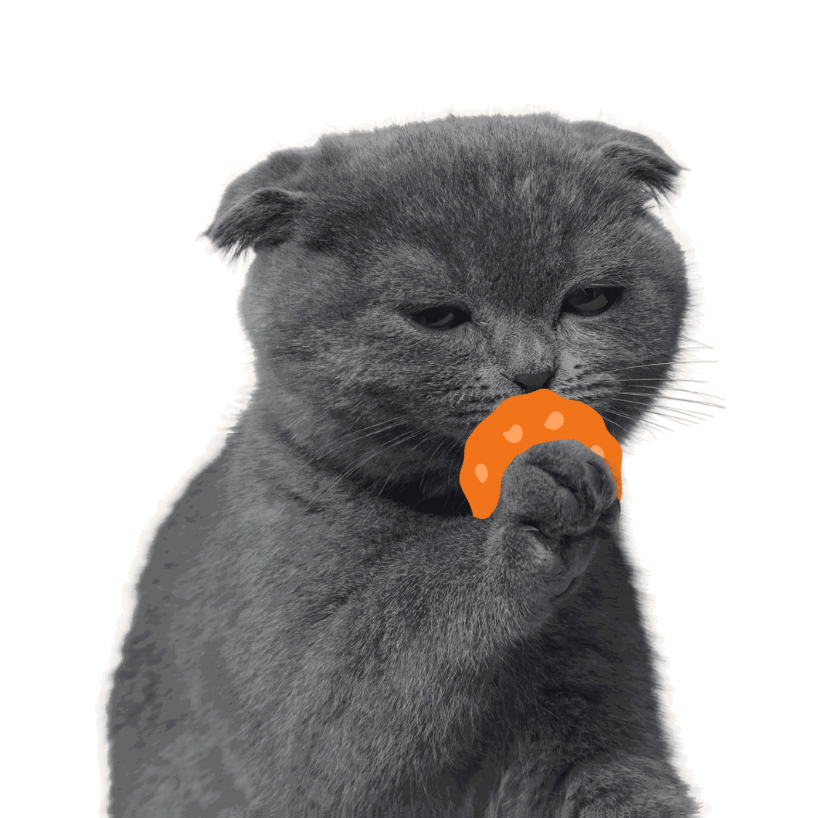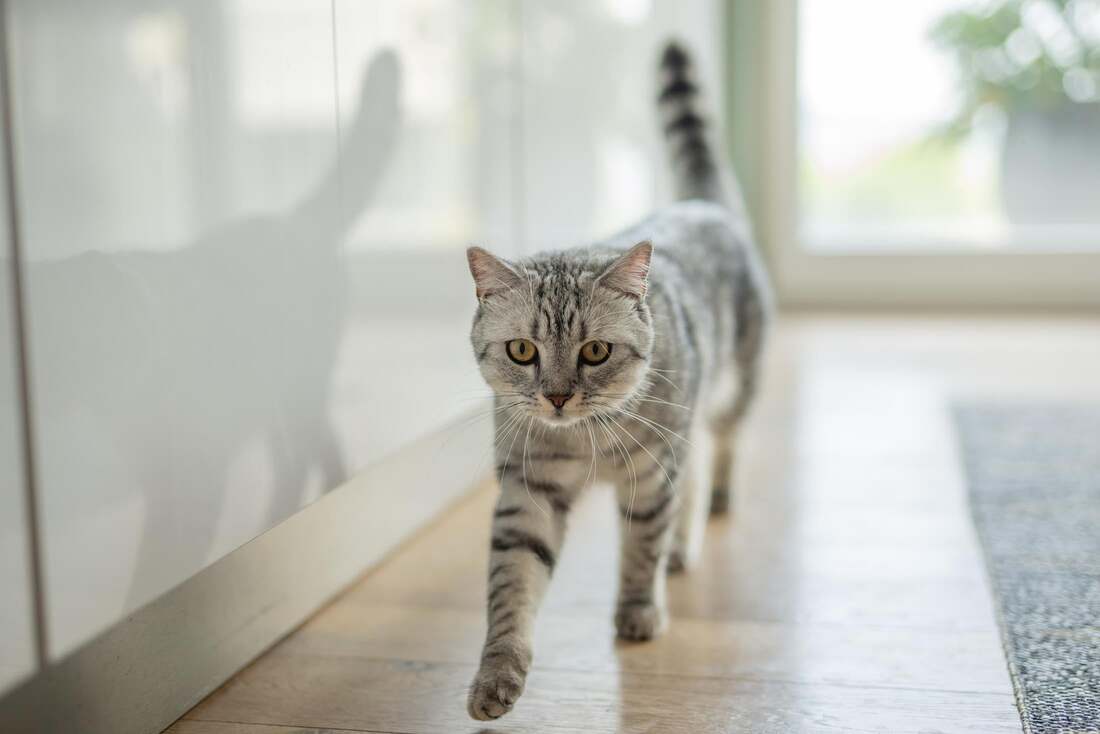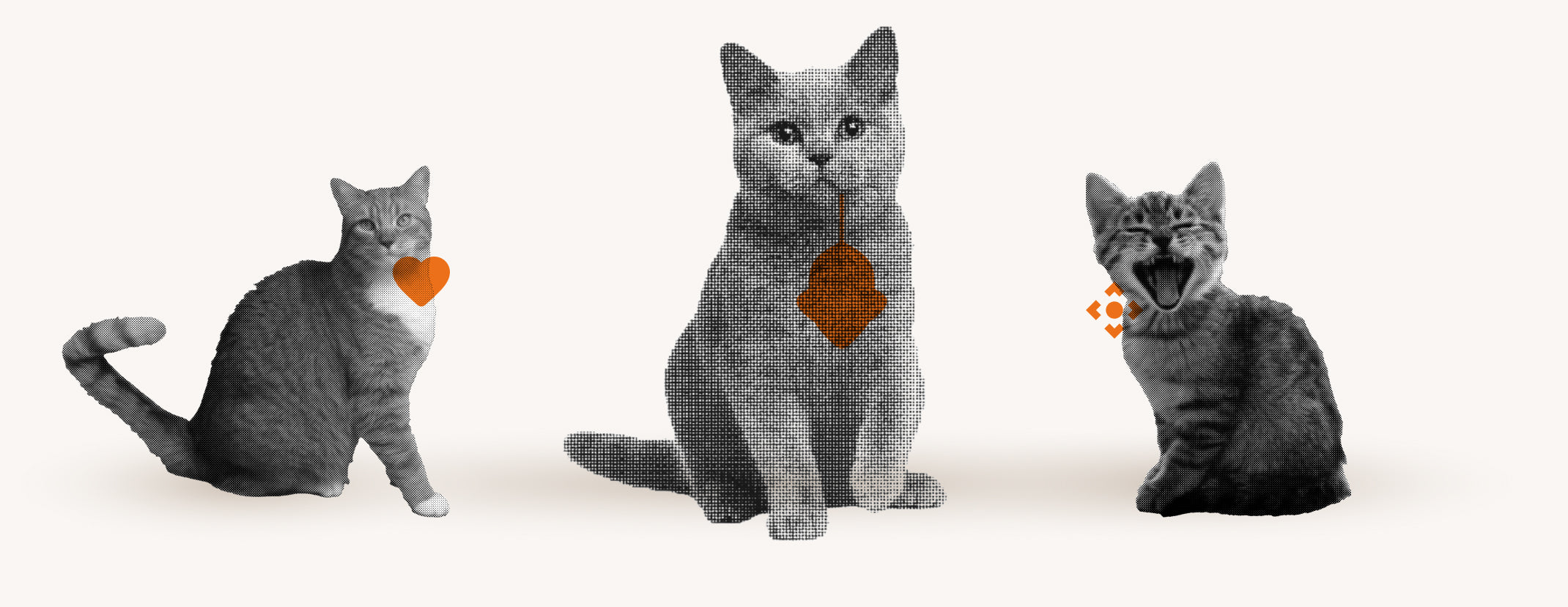Are you ready to take your cat's diet to the next level?
Many cat owners are unsure how to prepare healthy and tasty food themselves.
A BARF recipe for cats allows you to cook a balanced and nutritious meal for your pet.
In this article, you'll learn all about the benefits and challenges of cooking for cats, important nutritional supplements, and how to ensure your four-legged friend gets all the essential ingredients.
Benefits of Homemade Cat Food

Home-cooked cat food offers numerous health benefits and allows cat owners to closely control the quality and freshness of the ingredients. By preparing your cat's food yourself, you can ensure that it is free from preservatives and artificial additives. This can be especially important for cats with special dietary needs or allergies. Cooking at home also allows you to adjust portions according to your cat's energy needs and preferences.
Many cat owners report that their pets have improved digestion and a shinier coat after switching to homemade food. Home-cooked cat food can also help keep your cat better hydrated, as cooked meals often have a higher moisture content than dry food. This is especially beneficial for cats who don't drink enough. Cooking also gives you the opportunity to tailor the food to your pet's individual health requirements, for example by choosing specific protein sources or adjusting the fat content.
Necessary additives for a balanced cat food

When cooking cat food yourself, it is crucial that you add all the necessary nutrients to ensure a balanced diet. Some important additives include taurine, which is essential for cats' heart health and vision, and vitamin A and B vitamins. These nutrients are especially important because cats cannot produce them in sufficient quantities on their own. Animal fat is also important because it provides energy and helps with the absorption of fat-soluble vitamins.
Minerals such as calcium and phosphorus must also be present in the correct proportions to support bone and dental health. It is important to avoid overdosing, especially with nutrients such as vitamin A, which can be toxic in excessive doses. Consulting with a veterinarian or nutritionist can be helpful to ensure that the home-cooked food contains all the necessary nutrients in the correct amounts. Supplements can be purchased and dosed as directed to avoid deficiencies.
Dealing with Nutrient Loss During Cooking
When cooking cat food, it is important to use methods that minimize nutrient loss. Vitamins can be destroyed during the cooking process, especially water-soluble vitamins such as vitamins B and C. To prevent this, mix the cooking water, which may have dissolved vitamins, back into the food. Slow cooking at low temperatures can also help to better preserve nutrients.
Another important aspect is storing cooked food properly. To preserve nutrients, you should allow the food to cool quickly and then store it in the refrigerator or freeze it. When thawing, it is advisable to thaw the food slowly in the refrigerator and ensure that all parts of the food reach room temperature before feeding. This will help ensure the quality and safety of the food and minimize nutrient loss.
Challenges and Disadvantages of Cooking for Cats
While cooking cat food at home has many benefits, it also comes with some challenges. One of the biggest challenges is the amount of time it takes to prepare it. You must carefully select the ingredients, prepare them correctly, and ensure that all meals are balanced. This can be especially challenging if you have a busy schedule or multiple cats to care for. In addition, the food must be stored properly after cooking to maintain freshness and nutritional quality.
In addition to the time involved, there are also risks associated with cooking cat food. For example:
- Bacterial contamination : Even if you use fresh ingredients, there is always a risk of bacterial contamination if the food is not cooked or stored at the correct temperature.
- Nutrient loss : Cooking can cause important nutrients such as vitamins and minerals to be lost, which can lead to inadequate nutrition for your cat if not properly supplemented.
These risks require careful management and possibly additional research or advice from a pet nutritionist to ensure your cat is getting all the necessary nutrients.
Cooked Food vs. Raw Feeding: A Comparison

Deciding between cooked food and raw feeding (BARF) is an important consideration for many cat owners. While BARF aims to mimic cats' natural diet by feeding mostly raw meat, cooked food offers a safer alternative that minimizes the risk of bacteria and parasites. However, the heat from cooking changes protein structures and can reduce some nutrients, such as certain vitamins, so it's important to understand the pros and cons of both feeding methods to make the best decision for your cat's health.
A key difference between cooked food and raw feeding is digestibility and nutrient absorption. Raw meat can often be better utilized by cats because it contains the enzymes and natural nutrients that are partially destroyed in the cooking process. On the other hand, cooked food can be easier to digest for cats with sensitive stomachs or older animals. The choice between cooked and raw food should therefore be made taking into account your cat's individual health and preferences and in consultation with a veterinarian.
Meat selection for cat nutrition

Choosing the right meat is crucial to your cat's health and well-being. Different meats offer different nutrient profiles that may be tailored to your cat's specific needs. Poultry, such as chicken and turkey, is easy to digest and works well for cats with sensitive stomachs. Beef is rich in iron and other important minerals, while organ meats, such as liver and heart, are particularly nutrient-dense. It's important to choose high-quality meat and pay attention to cleanliness when preparing it to minimize the risk of disease.
When choosing meat, you should also pay attention to the fat content, especially if your cat tends to be overweight. Lean meat such as poultry breast meat or lean beef is preferable. Pork should always be cooked and never fed raw due to the risk of infection from the Aujeszky virus. To ensure a balanced diet, a combination of different types of meat can be useful to provide all the necessary nutrients and make meals interesting for your cat.
Fish in Cat Food: What You Need to Know
Fish is an excellent source of protein and offers many benefits to a cat's diet. It is rich in omega-3 fatty acids, which are important for your cat's skin and coat health. Fish oil also contains important vitamins such as vitamin D, which contributes to bone health. However, it is important to choose the right type of fish, as not all fish are the same. Some fish can contain heavy metals such as mercury, which can be harmful to cats, so it is advisable to focus on safer options such as salmon or trout, which tend to contain fewer contaminants.
However, there are some disadvantages to feeding fish to cats. Raw fish should be avoided as it can contain enzymes that destroy vitamin B1 (thiamine), which is essential for cats. This can lead to serious health problems. Therefore, it is safer to cook the fish before offering it to your cat. Here are some important points to keep in mind:
- Always choose fresh or well-preserved fish without added salt or preservatives.
- Cook the fish thoroughly to kill any potential parasites and bacteria.
- Avoid feeding your cat fish too often, as too much fish oil intake can lead to a nutrient imbalance.
Grains and vegetables: A useful addition?
Although cats are primarily carnivores, adding grains and vegetables to their diet can be beneficial. Grains such as rice or oats, in small amounts, can provide energy and important vitamins and minerals. Vegetables, on the other hand, provide fiber that aids digestion and contains essential nutrients such as vitamins A and C. However, it is important that these ingredients only make up a small portion of the overall diet and are prepared properly to optimize nutrient absorption.
When choosing vegetables and grains for your cat, there are a few things you should consider:
- Avoid vegetables that can cause flatulence, such as onions or garlic, as these can be toxic to cats.
- Carrots, zucchini and cooked pumpkin are well suited as they are easy to digest and provide important nutrients.
- When it comes to grains, make sure they are whole grains, as these contain more nutrients than processed grains. Small amounts of cooked brown rice or barley can be useful additions, provided your cat does not have any allergies.
These ingredients can be a useful addition to the meat portion of your cat's food and contribute to a balanced diet.
The Importance of Eggs in Cat Nutrition
Eggs are an excellent source of high-quality protein and contain essential amino acids that are important for your cat's health. They also provide a variety of vitamins and minerals, including vitamin A, vitamin D, vitamin E, B vitamins, and the important minerals iron and selenium. These nutrients support a variety of bodily functions in cats, such as supporting the immune system, promoting healthy skin, and strengthening vision.
To safely integrate eggs into your cat's diet, you should consider a few important points:
- Cooked eggs are safer than raw eggs because cooking eliminates the risk of salmonella and other bacterial infections.
- It is important to feed only the yolk and cooked egg white and to avoid raw egg white as it contains avidin, which can block the absorption of biotin (a B vitamin).
- Eggs should only be given as an occasional supplement to regular cat food, not as a daily diet, to ensure a balanced diet.
Dairy products in cat food: yes or no?
Dairy products in cat food are a controversial topic. Many cat owners wonder whether they can give their cats dairy products. In general, adult cats are often lactose intolerant, which means that they cannot digest milk sugar. This can lead to digestive problems such as diarrhea and flatulence. However, there are also dairy products that can be safe for cats in small quantities:
- Hard cheese in which the lactose is almost completely broken down during the ripening process.
- Fermented products such as yoghurt or cottage cheese, whose lactose content is reduced by bacteria.
Despite the potential benefits that some dairy products offer, such as being a good source of protein, they should only be used as occasional treats and not as a regular part of the diet. It is important to monitor your cat's reaction to certain dairy products and, if there are signs of intolerance, remove them from the diet immediately. In summary, dairy products should be used with caution in the cat's diet and should always be offered in the context of individual tolerance and in small quantities.
Cooking Oils in Cat Food: A Healthy Choice
Edible oils play an important role in cat nutrition because they provide essential fatty acids that cats cannot produce themselves. The most popular oils include salmon oil, linseed oil and borage oil. These oils offer various health benefits:
- Salmon oil is rich in omega-3 fatty acids, which strengthen the immune system and contribute to a shiny coat.
- Flaxseed oil contains a balanced blend of omega-3 and omega-6 fatty acids, which promote skin health and have anti-inflammatory properties.
- Borage oil is known for its high content of omega-6 fatty acids, which are particularly good for skin care.
So, adding cooking oils to your cat's food on a regular basis can have many benefits. However, it is important to pay attention to the correct dosage to avoid overfeeding and maintain nutritional balance. Here are some tips for using oils in your cat's diet:
- Start with small amounts and see how your cat reacts.
- Mix the oil well into the food so that it is more easily absorbed.
- Consult your veterinarian to determine the ideal amount and type of oil for your cat's specific needs to ensure your cat receives all the benefits without any health risks.
Optimize your cat's nutrition with Flappie
Have you ever thought about how you can optimize your cat's diet by preventing them from bringing prey into the home? Flappie offers an innovative solution with a smart cat flap that uses a camera and AI technology to detect prey and deny entry if your cat tries to come into the house with prey. This contributes to a cleaner and healthier environment, which in turn has a positive impact on your cat's diet.
The Flappie app plays a central role in controlling this smart cat flap. You can:
- adjust the settings of the flap,
- Receive notifications when your cat comes home with prey,
- and even view videos and photos of your cat. These features allow you to better monitor your cat's activities and ensure your home remains prey-free. Visit https://flappie.ch to learn more about how Flappie can help you improve your cat's diet and well-being.





Share:
Cat food without carbohydrates: benefits and tips
BARF Cat Disadvantages: What you need to know